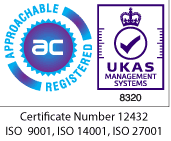Technology
Digital & Innovation
Innovation and digital strategy from the ground up
Combining Data, AI & Technology for Better Experiences
Your Strategy Lays the Foundation for Success
The three pillars of digital transformation and innovation
Successful digital transformation and innovation hinges on several key elements. First, a comprehensive strategic vision is essential, ensuring that technology adoption aligns with your business goals.
Second, you need to take a customer- or client-centric approach, focusing on enhancing customer experiences through personalised solutions and responsive services.
Third, an agile framework is necessary to develop processes that enable quick responses to market changes and future demand. These three pillars apply across all areas of digital transformation, whether you are upgrading the technology stack in a single department, your start-up or a global enterprise.
We act as your strategic partner
We work closely with our clients to design, build and scale transformative digital solutions, focusing on areas like data analytics, automated operations, AI and human-centred design. We also take care to analyse the impact of change on your workforce, providing adequate training and establishing a communication strategy to ensure your people stay on board.
"The advantage for PageGroup was an ability to ensure the network is optimised for applications at all times. This ensured a more robust and performant end-user experience. Network architects and managers were able to use this information to properly plan for business changes ahead."
PageGroup Case Study
33%
Adoption of GenAI worldwide by businesses
1300%
The average ROI of enterprises using business data & analytics
90%
Of organisations worldwide have implemented cloud technologies
3.5x
Companies with a culture of innovation are 3.5 times more likely to outperform their peers
Build from the Ground Up
The six critical areas of digital transformation, innovation, data and AI
Digital Strategy & Roadmap
A well-crafted digital strategy and roadmap offers a clear vision and direction, seamlessly aligning technology initiatives with business objectives. This strategic planning ensures that every workstream is intentional and coordinated, effectively minimising risks, sharing resources and maximising returns.
Agility & Innovation
An agile mindset allows organisations to quickly adapt to evolving market dynamics and customer expectations, ensuring they remain competitive and relevant. By embracing agile methodologies, you can streamline processes, enhance collaboration, and accelerate the delivery of new products and services.
Modern Technology Architecture
A modern architecture is the key to enhancing customer experience, cost efficiency, security, scalability, reliability, and agility. For example, by leveraging the cloud, you can adopt practices like DevOps while unlocking IoT and AI potential. An agile design approach anticipates future needs and elevates customer experience.
Digital Change Plan
A well-structured digital change plan ensures that your business is prepared for the shifts that accompany transformation, fostering a culture of change readiness and resilience. Effective change management involves engaging stakeholders, communicating your vision, and providing the necessary training and support to ease transitions.
Data Strategy & Analytics
A watertight data strategy ensures that businesses can effectively harness the power of data to inform decision-making and uncover new opportunities. Central to this strategy is data management and security, which establishes the frameworks and policies necessary to maintain data quality, cyber security and compliance.
Digital Upskilling
Digital upskilling empowers your workforce to effectively utilise new tools and technologies, fostering a culture of continuous learning and development. By investing in comprehensive training programs, you can bridge skill gaps, boost productivity, and inspire innovation.
Speak to one of our experts
How we help our clients
Our team of experts has decades of experience in complex digital transformation strategies
Digital Transformation
Our comprehensive transformation platform is designed to provide the architecture, frameworks, technology & people skills to lay the foundations for innovation and agility.
Data & AI
We leverage data analytics and AI to transform operations, enhance decision-making, and uncover strategic insights. Our solutions automate tasks and streamline workflows, boosting efficiency and freeing resources for innovation.
Innovation
We help you to establish the frameworks and mindsets essential for a culture of innovation. This in turn creates an innovation pipeline capable of delivering exponential ROI & widening your competitive edge.
Architecture & CIO
We align your IT infrastructure with strategic goals, offering guidance for seamless technology integration to ensure agility & competitiveness. We also offer a fractional CIO who will tailor solutions to enhance efficiency, drive innovation, and optimise resources.
Additional Services
Our Process
An iterative approach to digital transformation

1|
Create a Strategy
Evaluate existing digital systems and processes to identify inefficiencies and areas for improvement. Then define clear goals that will give ROI and which align with core business goals.
2|
Workforce Preparation
Assess change readiness and workforce resilience levels in your organisation. Then communicate the 'why' of change to ensure everyone understands the benefits and reasons for change.
3|
Capability Development
Develop the necessary capabilities to implement the chosen digital initiatives effectively. Use change management and agile project management methodologies to control costs and mitigate risk.
4|
Scale & Monitor
Use DevOps practices to enable rapid and reliable software development, testing, and deployment. Track progress against defined goals and make necessary adjustments as you scale your tech stack.
Don't ignore the human factor
Change Management methodologies are crucial for reducing workforce and stakeholder resistance in digital transformation projects, which often arises from fear of the unknown and disruption of established routines.
As organisations implement new technologies and processes, stakeholders may feel threatened or uneasy, making effective change management essential to facilitate a smoother transition and ensure successful adoption of digital initiatives.
Our team can be your team
Our team of experts have multiple decades of experience across many different business environments and across various geographies.
We can build you a specialised team with the skillset and expertise required to meet the demands of your industry.
Our combination of expertise and an intelligent methodology is what realises tangible financial benefits for clients.
Our Digital Experts
Rachi Weerasinghe
With over 30 years of experience leading international, multi-disciplined, and diverse teams, Rachi is highly experienced in IT and digital strategy, Operating Model design, change management, ERP applications, IT Operations, and data strategy.
Case Studies




Digital Transformation insights
Get in touch with our Consultants today
Case Studies
Our team has had the privilege of partnering with a diverse array of clients, from burgeoning startups to FTSE 100
companies. Each case study reflects our commitment to delivering tailored solutions that drive real business results.
CASE STUDIES
A little bit about Cambridge MC
Cambridge Management Consulting is a specialist consultancy drawing on an extensive global network of over 200 senior executives in 22 countries.
Our purpose is to help our clients make a better impact on the world.
ABOUT CAMBRIDGE MC


















